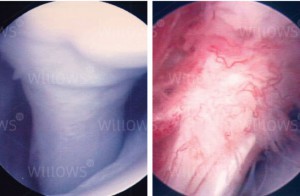By Jeffery D Regan LPT RTR Director of Rehab Services OAM
During the past 24 years of my experience in physical therapy, I have been fortunate to be involved in the education, training, and rehabilitation of many athletes from young to old, from amateur to professional. Orthopedic Associates of Michigan (OAM) and I are honored to be a part of this organization; we also look forward to reaching out through this blog to answer any questions you may have in regards to your specific sport and/or training. I’m a hockey, baseball, and running guy by trade, but if I don’t know an answer to your question, I have the resources and personnel to get it. Regardless of sport, one common ailment we see is repetitive use injuries in the form of: tendonitis or tendonosis.
The simple definition of tendonitis is an inflammation of a tendon caused by:
1. Doing too much too soon on a soft tissue structure that was not physically capable of handling the load placed upon it.
2. A bio-mechanical abnormality that improperly loads the tendon with force that is not in alignment with the fibers of the tendon itself.
3. A bio-mechanical abnormality where the tendon is being compressed between two or more boney structures.
4. A lack of range of motion leading to abnormal friction on a boney prominence. While there are sometimes other causes, these are the top reasons it manifests in athletes.
Tendonosis, on the other hand, is a condition where the tendon has gone through the tendonitis phase, likely more than once, so that the healthy fibers of the tendon have been replaced with scar tissue. Unlike healthy tendon fibers, which follow a longitudinal alignment, scar tissue fibers are more erratic and therefore unable to resist loads placed upon the tendon. This results in a weak spot in the tendon itself, creating the potential for a rupture or partial tear. Several studies over the years have documented that, if found early enough, this process can, to a large degree, be reversed with: correct treatment, specific exercises, bio-mechanical evaluation, and, unfortunately, time.
Most of the athletes at Athletic Mentors participate in sports that are highly repetitive by nature: running, cycling, swimming etc.. Most of these activities are measured in miles, many miles, which means that while improper loads to tendons may be minimal, over a longer distance they have the potential to present a much larger problem. For example, consider that the ground reaction force of running is 3 to 5 times body weight at the heel or forefoot strike of the gait cycle. If one were to make a change, such as switching from a motion control shoe to a shoe with less control, the pronation moment at mid-stance will increase to a level outside of the normal 15 degree range. In turn, the force on the tendon also increases thereby improperly loading the tendons that help support your arch. Now, if we take that abnormal load and apply it to a stride length of 3 feet over one mile, the “anti-pronation” tendons will have been abnormally loaded 880 times in each lower extremity. 880 times in just one mile.
In short, the body is an extensive network of supportive soft tissues such as ligaments, tendons, fascia and motors (muscles) that need proper bio-mechanics, flexibility, endurance, and strength. Lack of any of these can lead to tendonitis or, if chronic, a tendonosis problem. To reduce the chances of tendonopathy, get bio-mechanically sound. And, when you train for your next event, make sure that training includes resistance exercises and flexibility. Train for more than the event itself.
In the next blog, I’ll cover specifics on the rehab of tendonitis and tendonosis from a therapy standpoint.
Please feel free to give me feedback, ask questions, or send me ideas for future blogs. Remember, if I can’t answer your question, I know someone who can.
Keep your stick on the ice.











